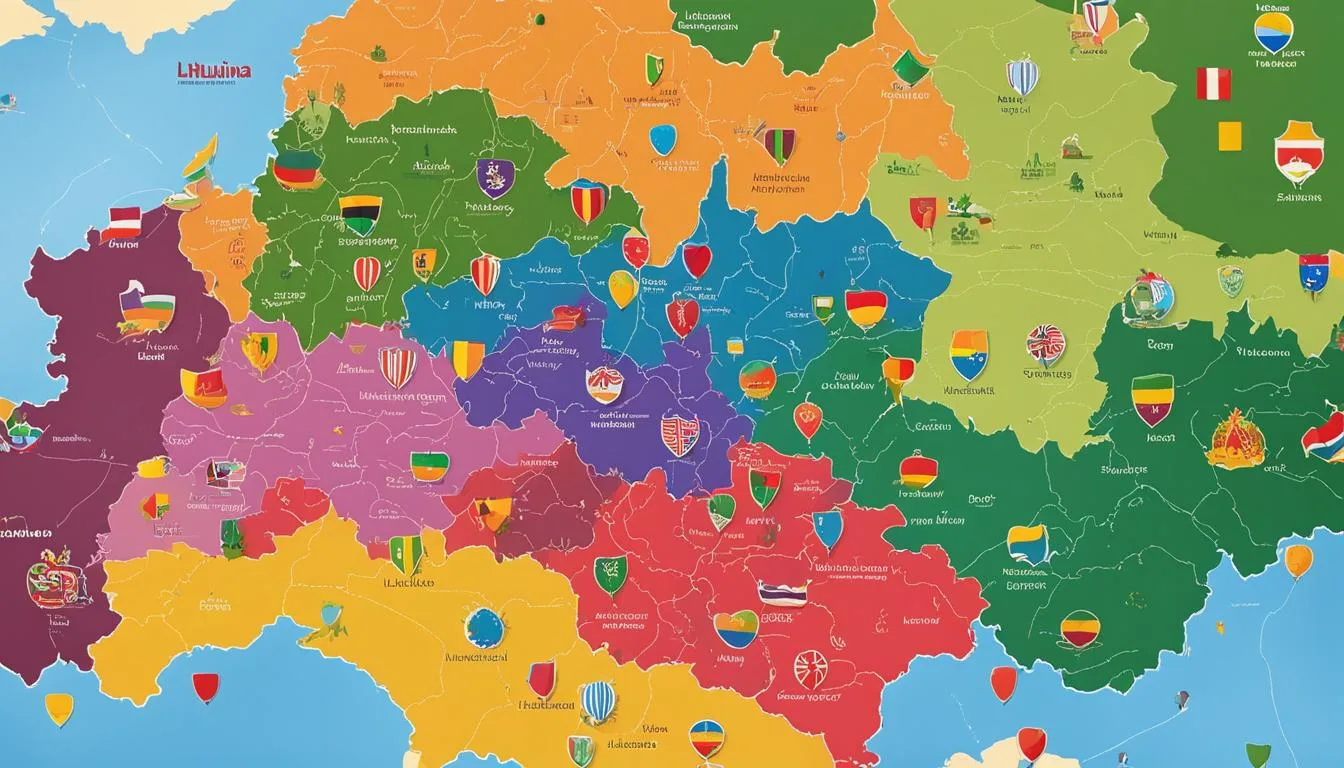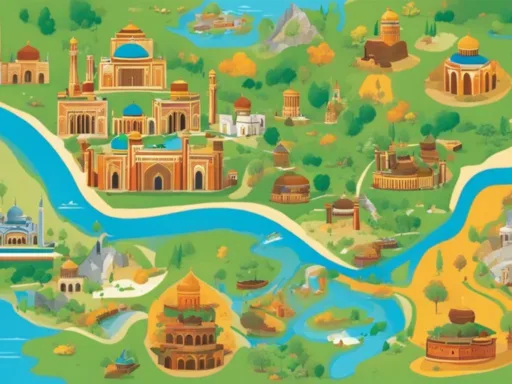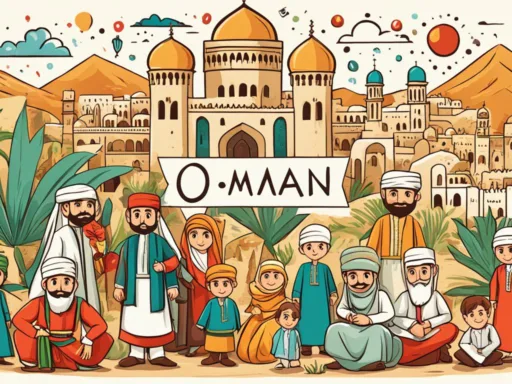In a world brimming with linguistic variety, few might guess that the relatively small nation of Lithuania is home to one of the most linguistically intriguing languages—as the Lithuanian language is the most conservative living Indo-European tongue, providing a window into the past that is virtually unmatched by any other European language. With around 3 million native speakers, Lithuania’s commitment to linguistic diversity is remarkable. The nation not only cherishes its own Lithuanian language, but also embraces a variety of minority languages, which contribute to the multicultural mosaic that is Languages spoken Lithuania.
Whether you’re a linguist, a culture enthusiast, or simply curious, the linguistic landscape of Lithuania offers an absorbing journey through history, culture, and modern pragmatism.
Key Takeaways
- The Lithuanian language stands as a unique preserve of some of the oldest features of the Proto-Indo-European language.
- Around 3 million people speak Lithuanian, reflecting a nation dedicated to preserving its linguistic heritage.
- Linguistic diversity in Lithuania includes a variety of minority languages alongside the predominant Lithuanian.
- The preservation and promotion of minority languages demonstrate Lithuania’s respect for cultural inclusion.
- Lithuania’s linguistic scenario is a fascinating blend of historical depth and contemporary multilingualism.
The Linguistic Landscape of Lithuania
Enveloped within the cultural tapestry of Europe, Lithuania presents a linguistic diversity reflective of its historical and contemporary influences. At the heart of this landscape stands the Lithuanian language, which serves not only as one of the official languages Lithuania has pledged to preserve but also as a vital element of national identity acknowledged across the European Union.
While Lithuanian marks its prevalence, the nation’s linguistic fabric is threaded with meaningful contributions from minority languages Lithuania is home to. In particular, Polish and Russian languages represent significant portions of the community owing to historical ties and demographic patterns. Speaking to its commitment towards an inclusive society, Lithuania facilitates the integration of these minority languages into education systems and public forums.
Adding to the nuance are the various Lithuanian dialects spoken across the country, which exhibit the rich innuendoes of regional linguistics. These dialects echo ancient ties, connect communities, and extend the linguistic narrative of a people deeply rooted in their native tongue.
| Language | Role | Presence in Public Sphere |
|---|---|---|
| Lithuanian | Official State Language | Widely used in governance, education, and media |
| Polish | Minority Language | Supported in regions with significant Polish communities |
| Russian | Minority Language | Historically prevalent, with a legacy in older generations |
The commitment of Lithuania to accommodate linguistic diversity is crystal clear through its statutes and public policies. This not only authenticates the essence of cultural inclusion but also strengthens the linguistic legacy upon which future generations will build their social fabrics.
Lithuanian: The National Tongue
The Lithuanian language stands as a testament to the mesmerizing mosaic of linguistic diversity in Lithuania. Immersed in the traditions of Indo-European languages, Lithuanian upholds a heritage that traces back to venerable tongues like Sanskrit and Ancient Greek. This rich historical lineage not only highlights the linguistic diversity of Lithuania but also underscores the importance of the Lithuanian language, Lithuanian dialects, and their standardization efforts within the fabric of the nation’s identity.
History and Evolution of Lithuanian
As a member of the Indo-European language family, Lithuanian has an intriguing history. Its evolution has been influenced by neighboring Finnic languages, while the impacts of both Germanic and Slavic languages have been less pronounced. Throughout its development, the Lithuanian language has been a symbol of national identity, resilience, and resistance—especially during times when foreign authorities prevailed in the region.
Dialects: Aukštaitian and Samogitian
Lithuania’s linguistic landscape is rich and profoundly marked by its dialects. The two primary ones, Aukštaitian and Samogitian, reveal intricate patterns shaped by geographic areas. Both dialects, while based on the same linguistic framework, exhibit distinct qualities in terms of phonetics, vocabulary, and grammar. Interestingly, the Samogitian dialect, with its Curonian influences, offers a glimpse into the linguistic diversity that thrived in Lithuania’s history.
Lithuanian Language Commission and Standardization
The Lithuanian Language Commission skillfully navigates the delicate balance between maintaining linguistic purity and embracing modern linguistic needs. By regulating the Lithuanian language and developing language policies in Lithuania, they oversee the introduction of new terms and the absorption of foreign loanwords—practices that respect the language’s integrity and facilitate its contemporary evolution. This careful approach to language standardization ensures that Lithuanian Sign Language and other dialects continue to thrive and adapt in a changing world.
Minority Languages in the Lithuanian Mosaic
Lithuania, a nation celebrated for its linguistic diversity, offers a fascinating glimpse into the lives of its minority language speakers. Among these, the Polish minority Lithuania and the Russian minority Lithuania are particularly noteworthy for their historical and cultural significance. Here, we delve into the intricate fabric of Minority languages Lithuania, exploring their current state and influence.
The Russian language, a vestige of Lithuania’s past under the Soviet Union, remains widely spoken by the older generation. However, there is a noticeable shift among the youth, with many young Lithuanians moving away from Russian in favor of other languages, reflecting a changing linguistic landscape.
Meanwhile, the Polish language serves not only as a means of communication but also as a cultural emblem for the Polish community in Lithuania. Its vibrancy is most palpable in regions like the storied city of Vilnius, where Polish heritage and language are a lived experience that shapes the regional identity.
- Cultural events that celebrate Polish traditions
- Media outlets that cater to the Polish-speaking audience
- Educational institutions that deliver curricula in Polish
While minority languages in Lithuania might not dominate the public sphere, they are integral to the tapestry of the nation, adding depth and color to Lithuania’s cultural fabric. It’s in the everyday interactions, the media, and the festivities that the true essence of these languages is felt and their continuity ensured for future generations.
The resilience of these languages amidst a majority Lithuanian-speaking population is a testament to Lithuania’s commitment to preserving linguistic diversity and the importance it places on multicultural dialogue within its borders.
Tracing the Roots of Lithuania’s Linguistic Diversity
The myriad tongues spoken in Lithuania today are a tribute to its complex past, where the ebb and flow of cultures have etched a remarkable linguistic landscape. This rich tapestry is deeply rooted in the tapestries of the Indo-European language family, with the Lithuanian tongue standing as one of the closest living relatives to the hallowed Proto-Indo-European language. Let us delve into the threads that weave the historical and linguistic fabric of this nation.
Indo-European Linguistic Heritage
Lithuanian is among the eldest of the Indo-European languages. Its lineage is traced straight to the dawn of the Baltic language family, a branch that mirrors the features of their common precursor, Proto-Indo-European. This linguistic ancestry is not merely historical curiosity; it is a living bridge to an era shrouded in mist, with Lithuanian preserving some of the most archaic and enigmatic elements of our shared linguistic heritage.

Influence of Baltic Tribes and Extinct Languages
The legacy of erstwhile Baltic tribes echoes in the Lithuanian language. Tribes such as the Yotvingians, Galindians, and Curonians have all but vanished, yet they left indelible marks through the Extinct Baltic languages that they spoke. Their syntax, their phonetics, and a copious trove of words have seamlessly woven their way into modern Lithuanian, thus, preserving the influence of Baltic tribes and their once-thriving tongues.
Here lies the beauty of the Baltic linguistic heritage: in a modern world where languages fade with the passing of generations, Lithuanian stands as a testament to its ancestors, cradling echoes from the distant past, as it forges ahead into the future. The following table encapsulates the fascinating connections between Lithuanian and its ancestral tongues:
| Extinct Language | Influence on Lithuanian | Examples of Borrowed Words |
|---|---|---|
| Old Curonian | Phonology and Lexicon | krantas (shore), bangos (waves) |
| Old Prussian | Vocabulary and Place Names | upė (river), šilas (forest) |
| Galindian | Cultural Terms | pienas (milk), raudonė (rye) |
| Yotvingian | Agricultural Terminology | akis (eye), baras (boar) |
This cognitive journey unravels the enduring narrative of a language and a people persisting through time. Lithuania’s linguistic fabric is a vibrant patchwork, dyed in the hues of the Indo-European and Baltic lexicons, stitched together by history’s hand. It forms not only a means of communication but a portal to peer into an ancient world that, though extinct in form, endures in spirit and speech.
languages spoken Lithuania
The cultural tapestry of Lithuania is woven with a multitude of languages, affirming the country’s status as a crossroads of linguistic diversity in Europe. At the heart of this diversity stands the Lithuanian language, which is predominantly spoken by residents and is renowned for its array of distinctive Lithuanian dialects. These local variations in language highlight the rich oral heritage that has been meticulously preserved and passed down through generations. Acknowledging the linguistic landscape of Lithuania, one observes the resonance of Russian and Polish languages, which echo the historical narratives of different communities within the nation.
While Lithuanian dialects, embodying the linguistic diversity in Lithuania, maintain a strong presence, other languages have also made a profound impact. The resilience of Russian, as a vestige of the past, contrasts with the burgeoning influence of English, particularly among the youth and within the tourism sector. English is widely recognized as an essential tool for international communication and professional development.
Furthermore, the language palette of Lithuania is enriched by Polish, which maintains a vibrant presence, especially in regions with significant Polish communities. This linguistic coexistence underscores the harmonious blend of different cultural backgrounds inherent to Lithuania. German, another language that holds sway, signifies both historical connections and pragmatic language-learning choices within educational institutions.
- Lithuanian – The predominant language, encompassing a spectrum of local dialects
- Russian – A historical language with continued usage among certain demographics
- Polish – The language of a sizeable minority community, preserving cultural uniqueness
- English – A growing linguistic force among the younger generation and business circles
- German – A language reflecting historical relations and present educational preferences
This linguistic mosaic not only emphasizes the traditional and evolving aspects of the country’s identity but also encapsulates the modern influences shaping present-day Lithuania. Delving into the linguistic diversity in Lithuania, one can appreciate the rich fabric of languages and dialects that both distinguish and unite its people.
Language Policies in Modern Lithuania
The tapestry of Lithuanian society is vividly colored by its language policies, which play a crucial role in the preservation and promotion of the nation’s linguistic identity. In recent years, Lithuania has moved decisively to uphold and enhance the status of the Lithuanian language while recognizing the linguistic rights of its diverse population. Through legislative initiatives and cultural programs, the nation has sought to strengthen Lithuanian language revitalization and ensure its primacy as one of the official languages of Lithuania.
Regulation and Revitalization Efforts
Policy-makers in Lithuania have taken a proactive stance on the regulation of language use within the country, setting a framework for the application of Lithuanian in a range of contexts. This ranges from official government documentation to public signage, all anchored by an underlying respect for linguistic rights in Lithuania. Language revitalization efforts are not just limited to pure legislative action; they extend into cultural and educational domains where they lay the foundation for a resurgent presence of the Lithuanian language in daily life and media. Furthermore, the ongoing support for Lithuanian sign language underscores the inclusive nature of linguistic policies that cater to all citizens.
Official Language in Public and Private Spheres
The mandate that Lithuanian be the official language in Lithuania resonates through every layer of public life. Institutions from parliamentary offices to local town halls adhere strictly to this policy, reinforcing the linguistic coherence across the nation. Such official endorsement, however, is balanced against the economic resonance of global languages. In the private sector, for instance, whilst Lithuanian is put at the forefront, nuances in language use in Lithuania are evident as businesses navigate the global marketplace, tactfully incorporating English and other European languages to operate effectively within the EU and beyond.
The Lithuanian government’s diligent work ensures that clinics, courts, and classrooms alike operate predominantly in the mother tongue, with legislation meticulously guiding this standardized linguistic environment. The strategic consolidation of language policies in Lithuania continues to bolster not only a sense of shared national identity but also a commitment to foster a multilingual society where everyone’s voice can find resonance.

Underpinning these policies is a robust educational system in which the Lithuanian language syllabus is implemented with considerable care to affirm its lasting relevance and to nourish a wellspring of new speakers. An informed blend of traditional teaching methods with contemporary approaches has been vital in the pursuit of linguistic equilibrium within the generationally diverse populace of Lithuania.
| Policy Area | Implementation | Impact |
|---|---|---|
| Government Documentation | Mandatory use of Lithuanian | Enhanced linguistic uniformity in official matters |
| Educational Instruction | Lithuanian as the medium of teaching | Linguistic proficiency and cultural immersion for students |
| Minority Language Rights | Support for bilingual signs and education | Preservation of linguistic diversity |
| Economic Integration | Use of English in international trade | Alignment with global economic practices |
| Public Signage | Lithuanian language prioritized | Visual reinforcement of national language |
These dynamic facets of the language use policy in Lithuania not only ensure the perpetuation of the Lithuanian tongue but also fortify the social fabric of the nation, weaving a coherent national narrative while simultaneously showcasing the country’s commitment to embracing its multilingual heritage.
Lithuanian Language in Education and Daily Use
Lithuanian language education is fundamental to the educational system of Lithuania, forming the bedrock upon which generations build their cultural and intellectual prowess. The daily use of Lithuanian characterizes daily interactions ranging from trade negotiations in market squares to academic discourses in universities, testifying to its ubiquity and rich cultural texture. Meanwhile, language instruction in Lithuania is not exclusive to native speakers; it extends its reach to all individuals looking to immerse in Lithuania’s heritage.
The intertwining of Lithuanian with daily life resonates through every layer of society. It is not merely a subject of study; it is the mode of instruction and the medium through which knowledge is conveyed and legacy is perpetuated.
| Educational Level | Language of Instruction | Cultural Impact |
|---|---|---|
| Primary Education | Lithuanian | Foundation of National Identity |
| Secondary Education | Lithuanian | Deepening Cultural Appreciation |
| Higher Education | Lithuanian | Expanding Academic Horizons |
| Adult Education | Lithuanian & English | Workforce Integration and Globalization |
Moreover, language instruction is tailored not only for scholarly undertakings. It has practical implications in the lives of Lithuanians, as seen in the daily use of Lithuanian in social relations, artistic expression, and in the embrace of modern technological platforms where the Lithuanian language secures a digital footprint as well.
“To speak Lithuanian is to speak the history of our people; to learn it, is to embrace our future.”
- The prevalence of Lithuanian across media platforms
- Integration of language studies with technological advancements
- Language’s role in bridging generational gaps within the community
Russian and Polish: The Dominant Minority Voices
Lithuania’s linguistic fabric is interwoven with the threads of numerous cultures, among which the Russophone and Polish communities play a significant role. These dominant minority voices not only shape the country’s linguistic diversity but also its cultural and social dynamics. Below, we dive into the contributions and characteristics of each community within the Lithuanian milieu.

The Russophone Population
In the urban tapestry of Lithuania, the Russophone Lithuania community paints a nuanced picture of the country’s historical narrative. This diverse group consists not only of ethnic Russians but extends to include Belarusians, Ukrainians, and members of the Jewish communities, reflecting the various facets of the Soviet linguistic influence. Despite shifting political landscapes, there is a resilience in the Russian language amongst the generation who came of age during the Soviet era, showcasing a preference for Russian as a primary or secondary language.
Polish-Speaking Communities and Cultural Impact
Equally integral to Lithuania’s mosaic are the Polish-speaking communities Lithuania, predominantly settled in the southeastern regions of the country, including the historical capital, Vilnius. The Polish minority Lithuania actively preserves its linguistic heritage through media, local cultural events, and education—elements that echo the Polish cultural impact throughout the nation. These endeavors not only safeguard the language but also enrich Lithuania’s multitude of voices and narratives.
| Linguistic Community | Percentage of Population | Primary Regions | Cultural Influence |
|---|---|---|---|
| Russophone | ~5.8% | Urban Centers | Literature, Media, Performing Arts |
| Polish-speaking | ~6.6% | Southeast Lithuania (Vilnius) | Educational Institutions, Media, Cultural Festivals |
Foreign Languages: The Growth of English and Others
The ascent of the English language in Lithuania marks a cultural shift towards greater international integration. Embraced predominantly by the younger generations, English is often considered a gateway to global opportunities—educationally, professionally, and culturally. This tangible enthusiasm for foreign language learning in Lithuania highlights a broader embrace of linguistic diversity, as youths, professionals, and learners across the nation enrich their linguistic portfolios.
While English may be the frontrunner in Lithuania’s foreign language scene, other European languages are also staking a claim. These linguistic pursuits tap into the cultural fabric of the continent, drawing upon historical connections, economic ties, and a desire for cultural fluency.
| Language | Popularity | Purpose of Learning |
|---|---|---|
| English | High among youth | Global commerce, travel, and entertainment |
| German | Medium | Economic relations, historical ties |
| French | Emerging interest | Cultural appreciation, international diplomacy |
| Spanish | Growing | Tourism, global communication |
The multifaceted approach to language education in Lithuania not only broadens the horizons of its people but also fosters an environment where linguistic diversity is celebrated. As the global village continues to shrink and international connectivity becomes the norm, the value of foreign language learning resonates strongly through the Baltic air.
Conclusion
The intricate tapestry of linguistic diversity Lithuania is not just a feature of day-to-day communication but a profound pillar of its cultural identity. The enduring voice of the Lithuanian language, deeply woven into the Indo-European linguistic lineage, echoes the resilience and historical journey of the nation. Alongside, Lithuania’s soundscape is enriched by the harmonious presence of numerous minority and foreign languages, each contributing to the country’s vibrant cultural mosaic and signaling its openness to global engagement.
In a world where globalization could easily erode linguistic heritage, Lithuania stands as a beacon of balanced evolution. Here, the languages spoken reflect a commitment to preserve the past while embracing the advantages of cross-cultural communication. The result is a dynamic environment where education, policy, and community support work in concert to nurture every voice, be it in Lithuanian, Russian, Polish, or the steadily popular English, among other languages.
Looking ahead, Lithuania’s fidelity to its linguistic diversity signifies more than mere tradition; it is a conscious stride towards an inclusive society and a national narrative that values connection and understanding. As linguistic landscapes continue to shift and morph globally, Lithuania’s model of honoring language as a cornerstone of cultural identity and international collaboration inspires a vision for the future that remains inclusive and richly diverse.






